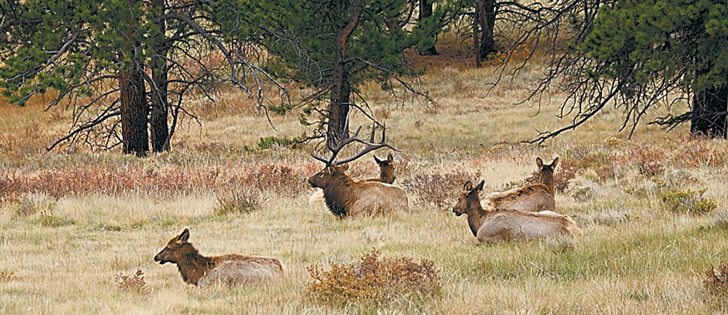Wild herds move off the military base in southern Alberta to damage crops and pastures; sunflower crop latest victim
It has been proven: elk like sunflowers.
Andy Kirschenman, who farms near Hilda, Alta., is the unfortunate farmer who confirmed that fact.
Last week, he found about 25 acres of sunflowers decapitated and consumed by elk that live on nearby Canadian Forces Base Suffield in southeastern Alberta. The animals regularly venture off the 2,700 sq. kilometre base to taste the delicacies inadvertently offered by farmers and ranchers in the region.
“They must like sunflowers,” said Kirschenman after noting the damage Sept. 8.
“We’ve seen them in there. We actually had some hunters drop by today. The season opens tomorrow, and they mentioned that they (the elk) were in there today, too.”
Read Also

Manitoba extends Crown land rent freeze
Manitoba government links the continued rental rate freeze on grazing and forage leases to economic and environmental challenges facing the industry
He has 500 acres of sunflowers, all destined for the birdseed market, so elk didn’t destroy the entire crop.
“From what we can tell, there will be payment through crop insurance … but before the base decided that the horses had to come out and the elk had to go in, nobody had any elk trouble,” said Kirschenman.
The Suffield elk herd began with the introduction of 200 animals in the 1990s. They replaced feral horses that once roamed the same area. Mild winters, no natural predators and restricted hunter access on the army base have helped the herd grow to an estimated 9,000 animals.
Area farmers and ranchers have requested for years that the herd be controlled, but potential action has been complicated by politics involving municipal, provincial and federal governments. There is also the added challenge of army base activities and security needs.
However, Kirschenman thinks there’s hope for action.
“It’s been recognized, but now it’s still the question of how many have to be taken out, what’s the best way of doing that, what’s the best way to manage this population.”
Brad Osadczuk, a rancher from Jenner, Alta., who is also a councillor for Special Area 2, isn’t so sure the various governments, including Alberta’s NDP, are getting the message.
“I had a pretty good feeling last fall that we were gaining some ground, but then with the change in the government, the whole thing has shifted again. It just seems like its never ending,” he said.
“We need to get control of the herd.”
Osadczuk, who is involved in the local community pasture, said recent changes in elk herd behaviour on grazing land are a concern.
“There’s some pretty big cow (elk) herds that calve off the base in the springtime and we’ve never really seen that before,” he said.
“That’s worrisome because if they calve out there, then they’re going to probably spend more time out there, and then their calves are going to spend more time out there. They just get more and more comfortable.”
Southeastern Alberta is typically dry, and Osadczuk said he is worried about future grazing pressure from the elk, as well as competition for available water.
The province has issued more elk hunting tags for the region in the last several years, and the army base has allowed greater access to its property. However, Osadczuk said the number of elk hunted is far less than the annual population growth.
Increased hunting is not enough of a solution, said Cypress-Medicine Hat Wildrose MLA Drew Barnes, who met with Suffield base commander lt.-col. John Scott Sept. 9 to discuss the problem.
“The commander is very aware of it, very willing to help,” said Barnes.
“He has his limitations because it is a provincial resource, so we’ll see what the direction becomes from the new government.”
Barnes said landowners have told him of problems with crop damage, fence damage, hay and pasture loss and highway safety issues.
“The other big concern is they are so amazed that the government has put this resource there and let it grow without a plan in place, and now there seems to be no way to keep the size of the herd in check,” he said.
barb.glen@producer.com
















